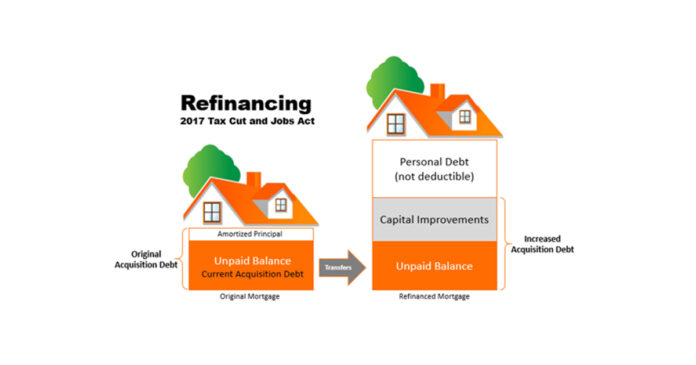 Mortgage interest paid on your principal residence is as deductible today as it was in 1913 when the 16th Amendment allowed personal income tax. The 2017 Tax Cut and Jobs Act reduced the maximum amount of acquisition debt from $1 million to $750,000.
Mortgage interest paid on your principal residence is as deductible today as it was in 1913 when the 16th Amendment allowed personal income tax. The 2017 Tax Cut and Jobs Act reduced the maximum amount of acquisition debt from $1 million to $750,000.
Acquisition debt is the amount of debt used to buy, build or improve a principal residence, up to the maximum amount. A common misunderstanding among taxpayers is that you are entitled to that much debt even if you refinance a home during your ownership years.
Acquisition debt is a dynamic number that changes over time. It decreases with normal amortization as the principal amount of debt is reduced. The only way to increase acquisition debt after a home is purchased is to borrow additional funds that are used for capital improvements.
Assume a person buys a home with a new mortgage and, after the home has enjoyed significant appreciation, refinances the home for much more than is currently owed. Let’s also say that the refinance amount is less than $750,000, which might lead the borrower to an erroneous conclusion that all the interest will be deductible.
The current acquisition debt is transferred to the new mortgage. Only the portion of the funds used to pay for new capital improvements can be combined to equal the increased acquisition debt. The interest on that part of the mortgage is deductible as qualified mortgage interest.
The remainder of the refinanced mortgage is attributed to personal debt and the interest paid on that is not deductible.
Lenders are not generally concerned with making a homeowner a fully tax-deductible loan. Lenders are interested in making a loan that will make a profit and be repaid according to the terms. The annual statements that most lenders issue to borrowers indicate how much interest was paid in a calendar year as they are required to do by federal law.
Part of the confusion may be because homeowners believe they can deduct interest on debt up to $750,000 and this annual statement shows the interest paid for the year. It is up to each homeowner to keep track of their acquisition debt and only deduct the qualified mortgage interest.
Your tax professional can be very helpful in determining this amount. It is important to notify them that you have refinanced a home during the tax year for which the taxes are being reported. For more information, see IRS Publication 936 and Homeowners Tax Guide. Home equity debt has not been allowed since the beginning of 2018.



